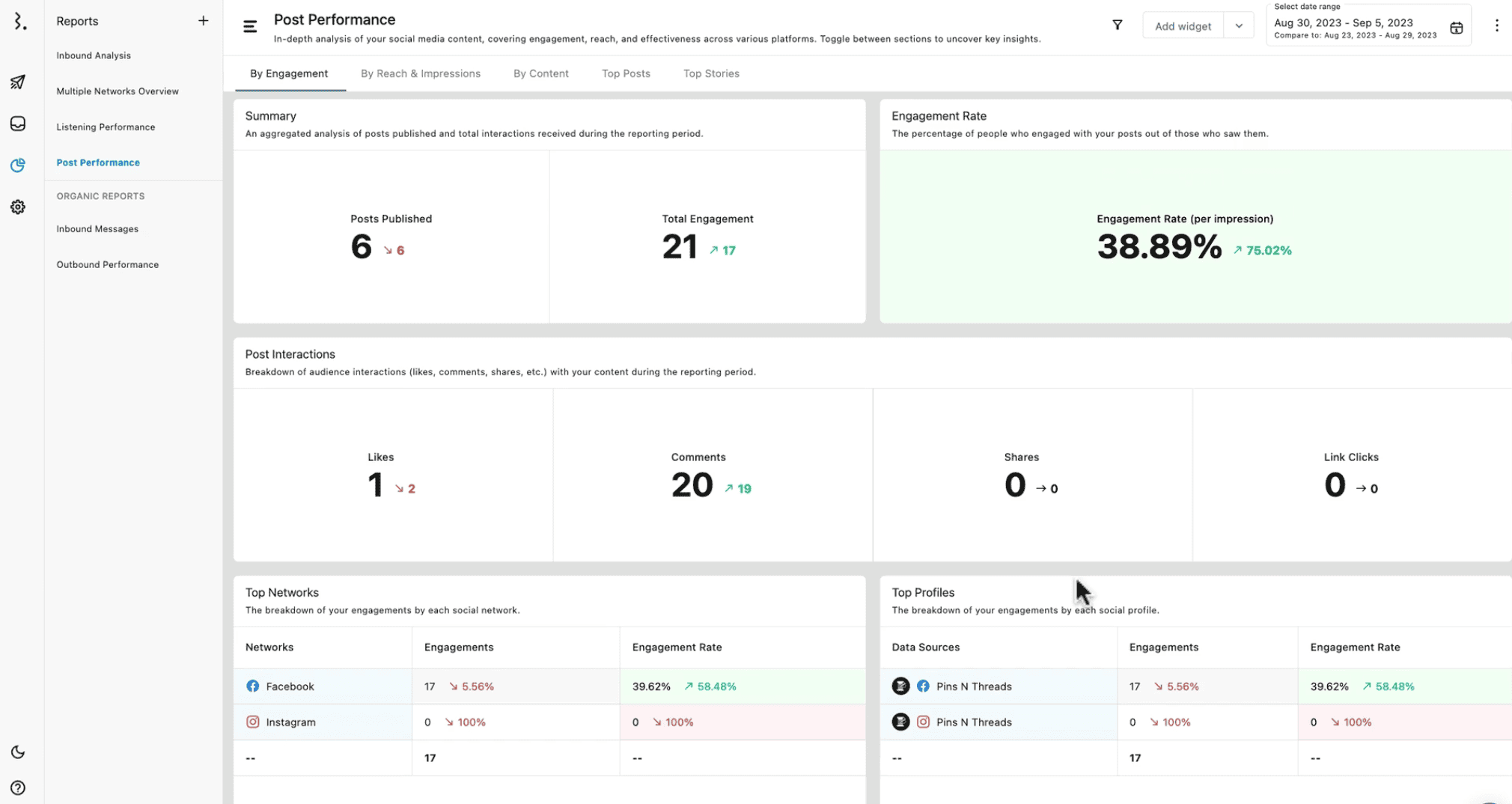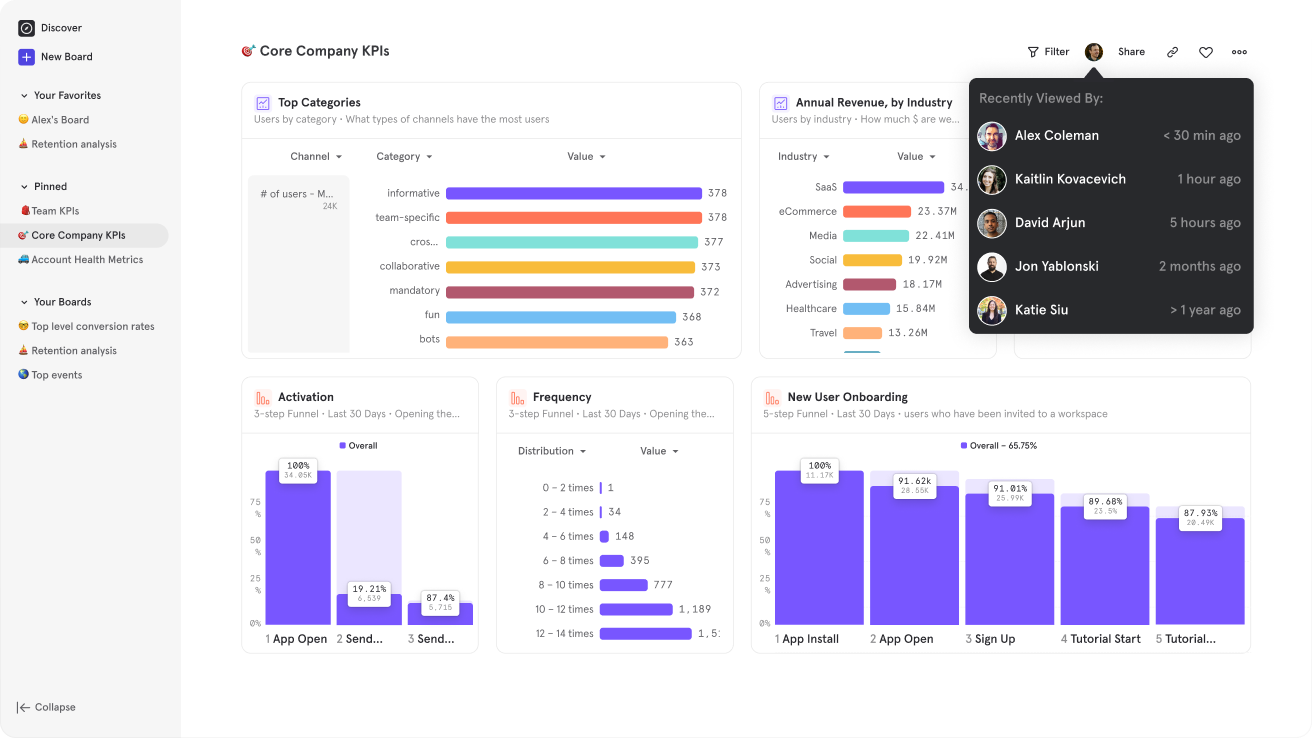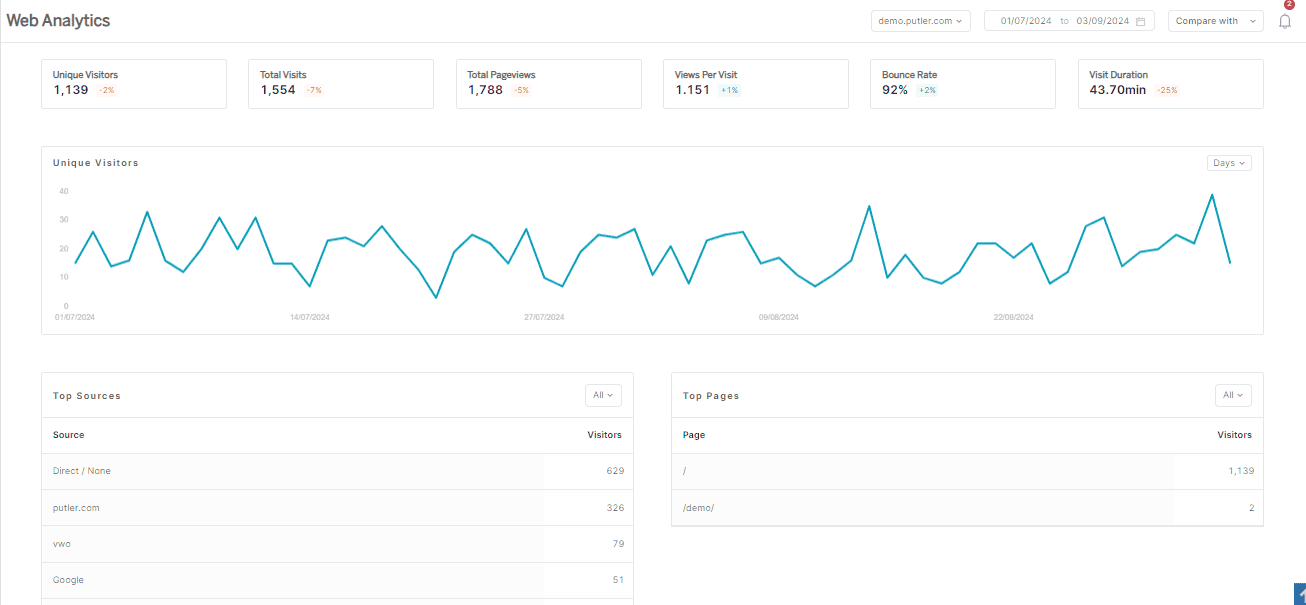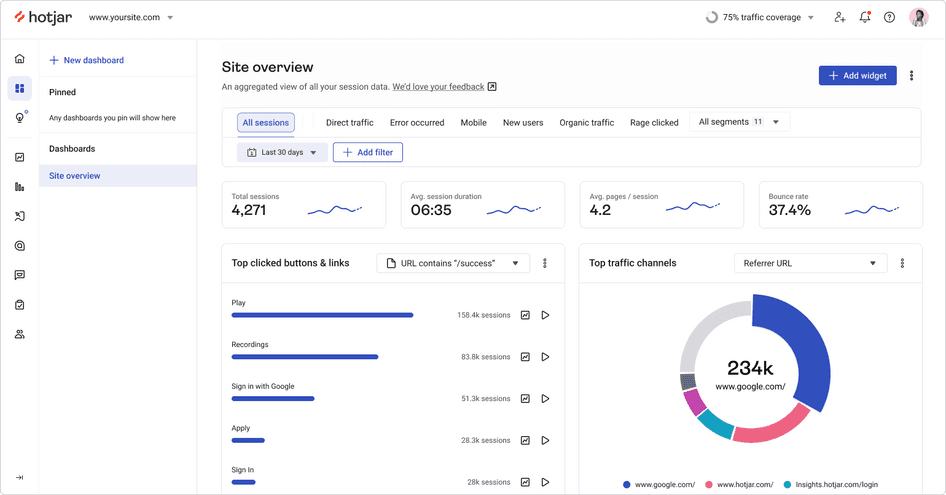Data analytics for marketing is not a new concept. In fact, marketers have been using data analytics to make better decisions for years.
Don’t believe us? Google Analytics is one of the best examples of how analytics can help marketers.
While Google Analytics is limited to website analysis, there are other aspects where data analytics can also help.
Marketers can use data analytics to optimize their campaigns, make better decisions, manage resources better, and boost the ROI.
In this article, we are going to dive deeper into how marketers can combine data analytics and marketing to achieve better results.
So stay tuned.
What is data analytics for marketing?
Data analytics in marketing is the practice of gathering and analyzing data from various sources to gain actionable insights and make informed decisions.
You might be using data analytics for different aspects of your business so why miss marketing?
- In marketing, data analytics can help you get deep insights into your customer and allow you to understand their behavior, preferences, and needs.
- It also helps you to track your campaign performance in real-time and see what is working for you and what’s not. This also helps you to find areas where you can make necessary adjustments.
- You can also use data analytics to focus on future trends, anticipate customer needs, personalize your campaigns, and ultimately stay ahead of your competition.
- Lastly, it also helps you to make informed decisions on the allocation of resources by letting you know which channels work best for you.
Types of data for marketing analytics
So now that you know a little more about data analytics in marketing, let’s explore various styles of analytics and how it can help you.
Descriptive analytics
Descriptive analytics focuses on historical data analysis. This gives you detailed insights into what happened in the past and helps you identify trends and patterns.
For example, using tools like Trello, you can analyze the last month’s social media performance, you can understand what type of content resonates with your audience.
Prescriptive analytics
Prescriptive analytics goes one step further and recommends actions to be taken in the future.
For example, if a company runs multiple ad campaigns across various channels, they can use Google Analytics. It will help them with prescriptive analytics to analyze the data and also recommend which channel has the highest ROI.
Predictive analytics
Predictive analytics helps you understand future trends and behaviors. This helps you to anticipate your customer needs and tailor your campaigns.
For example, Putler predicts future sales demand which helps you with sales forecasting. It also helps you with inventory management as you can see which product is selling well and ensure it’s never out of stock.
Key data sources for marketing analytics
Now that you know the importance of data analytics for digital marketing, here are a few key sources to collect data.
- Customer data: By looking into the customer data, you can find key insight into the demographics, behavior, etc. This helps you segment your audience better and also create personalized marketing campaigns.
-
Transaction data: Transaction data helps you understand and analyze purchasing behavior and customer spending. It further helps with price optimization strategies, sales promotion, and inventory management.
For example, with RFM segmentation, you can segment the customers according to their purchasing frequency.
Overall, it helps identify the top contributing customers and those who are on the verge of churning.
- Web analytics: Web analytics can help you understand how visitors interact with your website. It helps you understand how you can improve your website design to enhance user experience and refine existing strategies.
- Social media data: Social media data can help you understand the performance, engagement, sentiments, and trends across social media channels. It also helps to understand the effectiveness of social media campaigns and understand the audience preference.
- Survey data: Survey data helps you get direct feedback from your customers, understand the areas of improvement, and more. This data is very helpful in refining marketing data analysis, further polishing your product offering, improving your campaigns, customer service, etc.
These were some key data sources for your marketing analysis. Now let’s move on to the next step which is how to collect data.
How to collect and analyze data?
Here are a few steps you can follow to collect and analyze data:
-
Data collection method:
Data can be collected through the several methods that we just discussed – surveys, web analytics tools, transaction data, social media platforms, and customer databases.
-
Data cleaning and preparation:
Data cleaning ensures the quality of your data. So, after collecting it, you must clean and prepare the data to ensure the accuracy and reliability of the marketing data analysis.
It involves various steps such as removing de-duplication, correcting errors, handling missing values, and addressing inconsistencies.
The next step is data preparation which involves scaling the data, combining it from different sources, and converting it to a suitable format (CSV or Excel) for analysis.
-
Data analysis techniques:
For the next step, there are several techniques that you can use. For example:
- AB testing involves comparing two different versions of a variable to see which performs better.
- Regression analysis explores the relationship between a dependent variable and one or more independent variables. For example, analyzing the relationship between your sales revenue and the customer demography or marketing spend.
- Customer segmentation involves dividing a customer base into different groups based on similar characteristics. This allows you to tailor your marketing strategies to the target specific group.
- Cohort analysis tracks and compares specific groups of customers over time. This helps you to understand how different customers interact with the brand and provides insights into lifetime value retention.
- Lastly, sentiment analysis digs deeper into customer feedback and understands the sentiment behind the text.
Now that we have got a good understanding of data analytics for marketing and how to collect data, let’s check out some popular tools in the market.
Tools used in marketing data analysis
Here are a few tools to help you with data analytics in digital marketing.
Search engine optimization tools
SEO tools help optimize your website content, improve the search engine ranking, and drive organic traffic from search engines.
- Semrush: This SEO tool helps you to do comprehensive keyword research, site audit, backlink analysis, competitor analysis, etc.
- Ahrefs: Ahrefs is another tool that helps you with keyword research, backlink analysis, and site audit.
- Moz: Moz also provides the same features as above. It helps with keyword tracking, link building, on-page optimization, etc.
Marketing automation tools
Marketing automation tools help you streamline and automate several marketing tasks, such as email campaigns, lead management, and customer segmentation.
- Hubspot: This is a feature-rich CRM tool that helps with email marketing, lead management, and workflow automation. It is a great option for people looking for a tool to manage customer relationships and automate several tasks.
- Marketo: This tool from Adobe is known for its advanced marketing automation, including lead management and in-depth analytics. It is best for large organizations with complex marketing needs.
- ActiveCampaign: ActiveCampaign combines email marketing, CRM, and automation features in a user-friendly tool.
Social media analytics tools
Social media analytics tools can help you analyze social media campaign performance, manage multiple platforms in one place, and track key metrics.
- Hootsuite: This tool helps you schedule, monitor, and analyze social media posts. It provides a single platform for managing multiple social media accounts and provides insights into their social media performance.
- Sprout Social: Sprout Social helps with engagement tracking, detail reporting, and analytics. It automatically schedules posts at times when your audience is most active.
- Buffer: Buffer also helps you schedule social media posts. It is best for those who want to manage posts across various platforms and analyze engagement levels.
- Statusbrew: Statusbrew combines scheduling, engagement, and social media analytics tools into a single platform. It offers a unified inbox, AI-powered moderation, customizable reports, and CRM integrations, making it ideal for efficient social media management.
Cohort analysis tools
Cohort analysis tools help track and analyze specific groups over time. Let’s explore some of the popular tools in this category:
- Mixpanel: This tool can help you with cohort analysis, user tracking, and funnel analysis. Mixpanel also helps track user behavior over time and measure the impact of different actions.
- Amplitude: This is another powerful cohort analysis tool that also helps with user attention tracking and behavioral analytics. It provides detailed insights into user interaction and product uses.
- Heap: This tool helps with cohort analysis, user behavior insights, and event tracking. It also helps with funnel analysis and provides insights into conversion rates at every stage of the customers.
Business intelligence (BI) and data visualization tools
These tools help you get comprehensive data analysis and also understand data better.
-
Putler: Putler is a business intelligence and data analytics tool primarily for eCommerce and SaaS businesses.
It helps you consolidate, cleanse, and analyze data from multiple sources, providing on-demand reports and actionable insights. The best part of Putler is that it consolidates data from 17+ platforms, such as eCommerce platforms, payment gateways, and GA4.
It facilitates data-driven decisions with advanced features, such as Multi-store Management, Sales Heatmap, RFM segmentation, Sales Forecasting, Goal Tracking, and more.
- Tableau: Tableau is a data visualization tool that helps you analyze data creatively and interactively. It turns raw data into actionable insights.
- Looker: Looker is another business intelligence platform. It allows users to export data and get a centralized view. It helps in making data-driven decisions.
Website analytics tools
Website analytics tools help track and analyze visitors activity on your website.
- Google Analytics: Google Analytics is one of the most popular web analytics tools. It helps you track website traffic, user behavior, and conversion metrics. It provides valuable insights and helps in optimizing online presence.
-
Putler: Don’t be surprised to see Putler again. This multi-channel analytics tool also provides privacy-focused web analytics. You can find those insights in its Web Analytics and Audience dashboards.
The Web Analytics dashboard provides a clear picture of your website performance in an easy-to-understand manner. This makes it easy for you to understand how visitors interact with your website.
Putler’s Audience dashboard pulls data from Google Analytics and Google Search Console. So, whether you are new to GA4 and have trouble navigating the complex platform or have multiple Google Analytics accounts, Putler can be the best tool for your data analytics and marketing endeavors.
- Hotjar: Hotjar is an amazing tool that offers features like heatmaps, session recording, user tracking, etc. It helps with understanding user behavior and also improving the website’s UX.
These are some of the best tools in the market that can help you streamline marketing and leverage data for better decision-making.
Case studies – How other brands used data analytics for marketing
Coca-Cola: Personalized marketing campaigns
Coca-Cola’s Share a Coke is one of the best examples of how marketing data analysis can help deliver personalized campaigns. By analyzing customer data and preferences, Coca-Cola created personalized bottles with names and increased sales by 2%.
Netflix: Content recommendation system
Netflix uses predictive analytics to develop its recommendation system to suggest content for users. This has helped increase viewer retention and reduced churn rates. This also helped it to establish itself as a market leader.
Amazon: Dynamic pricing strategy & product recommendation
Amazon also uses data analytics for marketing in various aspects such as price optimization and providing product recommendations.
It analyzes the market to set the best price for its product without compromising with the profits.
It also uses data analytics to provide product recommendations. This is why whenever you open Amazon, you end up buying more than what you need.
Challenges and ethical considerations
Common challenges in business analytics for marketing are:
- Data quality issues: Poor data quality can lead to inaccurate insight. Inconsistent formats and outdated information hinders decision- making. Therefore, it is important to ensure data quality.
- Data privacy concern: Data privacy concerns arise from the collection of data and the use of personal information for their benefit.
- Compliance with data privacy rules: While collecting data from various data sources, you need to have some ethical consideration that involves compliance with data protection laws, such as GDPR.
This law ensures the privacy rights of individuals and mandates transparent data usage.
Overall the business must maintain a balance between decision making with ethical responsibility.
Future trends in data analytics for marketing
Here are some emerging trends that are gaining momentum in past years:
Artificial Intelligence (AI) & Machine Learning (ML)
Among the emerging trends in data analytics, AI and ML machine learning stand in the front.
Using these, businesses can target customers precisely with real-time personalization.
Additionally, AI and machine learning can help marketers gain deep insights into their customer behavior, predict future trends, and automate decision-making processes. It also helps with customer segmentation and tailors marketing strategies that resonate with the customers at the individual level.
Big data
Big data helps marketers to get a deeper insight into their customer behavior and marketing trends. This helps them make better and more informed decisions. It also empowers businesses to identify hidden trends and patterns so that they can capitalize on opportunities that would otherwise be unnoticed.
Automated data processing
Streamlining data collection and analysis is another rising trend among marketers. This saves their time for other important tasks. It also helps them to enhance efficiency and accuracy.
Predictive analytics
Predictive analytics is on the rise. It helps marketers to anticipate customer needs and behavior to optimize marketing campaigns and boost ROI.
Compliance
With the rising privacy awareness and data protection rules, the importance of compliance is in trend. Marketers have to prioritize these practices to maintain customer trust and avoid legal pitfalls.
Final words
This is it.
Overall, data analytics and marketing are not different. Together it can be a true game changer. Whether you want to track the performance of your campaign or get insights into your customer base, data analytics for marketing can help a lot.
And if we talk about data analytics, Putler is something you cannot miss. Whether you are an eCommerce business owner or a SaaS business, Putler can help you with all. It helps you track different aspects of your business and get detailed insights into various operations.
Want to know more about Putler? Book a consultation call today and our experts will contact you.
FAQs
How can data analytics help small businesses?
Small businesses can use data analytics in marketing to get a better understanding of their customer base. It can use data to make informed decisions and draft better strategies to maximize ROI. It also helps them to allocate limited resources and focus on channels that resonate better with their audience.
What are some challenges marketers face when using data analytics?
Marketers can face several challenges when using data analytics:
- Data integration: One of the biggest challenges for any marketer is to collect data from various sources and bring it together. It becomes even more difficult if it’s in different formats or systems.
- Data quality: Another challenge is ensuring the data you collect is accurate, complete, and up to date. Otherwise, you may get the wrong insights.
- Skill gaps: For better data analysis, marketers need to focus on some technical skills.
- Privacy concerns: While collecting data, adhering to privacy regulations while managing customer data is important. And for that, complying with various compliance requirements becomes another challenge.
How can data analytics help you make better marketing decisions?
Data analytics for marketing can help you make informed decisions. For example:
- Analyzing customer data can help you create targeted marketing campaigns that resonate with the audience.
- It helps in segmentation which helps in tailoring messages and offering personalized for each segment.
- With data analytics for digital marketing, one can easily analyze the performance of your campaigns and understand what works for you.
- Data analytics can also help in analyzing competitors analyzing gaps and capitalizing on opportunities.
Overall, there are many ways in which marketing data analysis can help marketers and business owners to make better decisions.


















